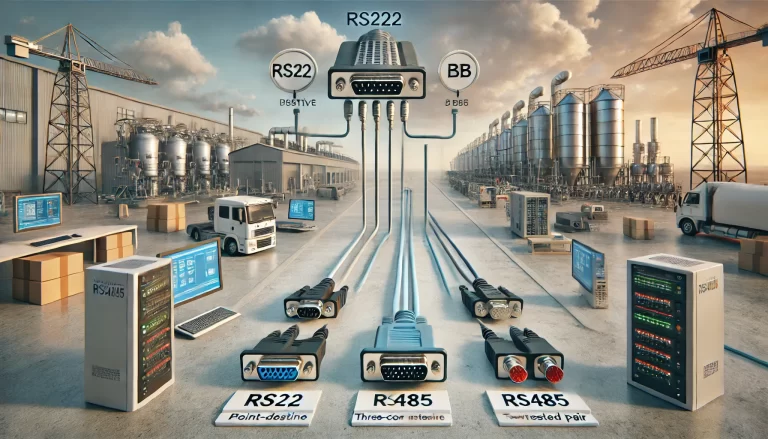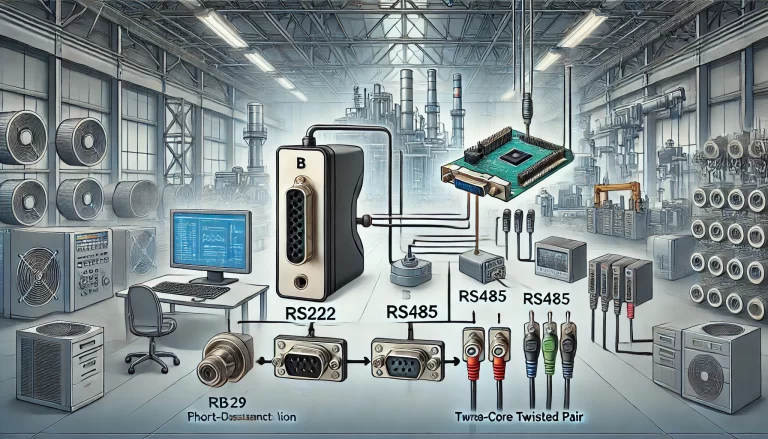Introduction: In the world of industrial automation and computer hardware, communication between devices plays a critical role. RS232 and RS485 are two widely used communication protocols that serve different purposes based on the specific requirements of an application. Each has its own set of physical, electrical, and communication properties, making them suitable for distinct scenarios. This article explores the differences between RS232 and RS485, their capabilities, and practical applications.
1. Physical Structure: RS232 is commonly recognized by its use of DB9 (9-pin) or DB25 (25-pin) connectors, often found on personal computers. The RS232 interface is fixed and standardized for short-distance communication between devices such as modems and printers. On the other hand, RS485 does not adhere to a specific connector format. Instead, it varies based on the requirements of different applications. For example, in industrial settings, RS485 might only use two simple terminals labeled A (positive) and B (negative). This flexibility makes RS485 ideal for applications requiring custom configurations, such as industrial automation systems.

2. Electrical Characteristics: RS232 operates with relatively high signal voltages, where logic “1” is represented by a voltage between -3V to -15V, and logic “0” is between 3V to 15V. This high voltage can sometimes damage interface circuits and is not compatible with TTL (Transistor-Transistor Logic) levels. In contrast, RS485 uses differential signal transmission, where logic “1” is represented by a voltage difference of +2V to +6V, and logic “0” is represented by a difference of -2V to -6V. RS485’s lower voltage and differential nature make it more robust and less prone to interference, which is especially useful in electrically noisy environments.
2. Electrical Characteristics: RS232 operates with relatively high signal voltages, where logic “1” is represented by a voltage between -3V to -15V, and logic “0” is between 3V to 15V. This high voltage can sometimes damage interface circuits and is not compatible with TTL (Transistor-Transistor Logic) levels. In contrast, RS485 uses differential signal transmission, where logic “1” is represented by a voltage difference of +2V to +6V, and logic “0” is represented by a difference of -2V to -6V. RS485’s lower voltage and differential nature make it more robust and less prone to interference, which is especially useful in electrically noisy environments.
4. Multi-Point Communication: RS232 supports only point-to-point communication, meaning only one transmitter and one receiver can be connected at a time. This limitation restricts RS232 to simple, short-distance connections between two devices. In contrast, RS485 supports multi-point communication, allowing up to 128 devices to be connected to a single RS485 network. This capability is particularly useful in environments like building automation, where multiple sensors and controllers need to communicate over a single bus.

5. Communication Cables: RS232 typically uses three-core twisted-pair or shielded cables for communication. RS485, on the other hand, can use two-core twisted-pair or shielded cables, depending on the transmission distance and environment. For low-speed, short-distance applications with minimal interference, regular twisted-pair cables suffice. However, for high-speed, long-distance transmission, impedance-matched RS485 cables (usually 120Ω) are necessary. In environments with significant electromagnetic interference, armored shielded cables are recommended to maintain data integrity.
6. Data Transmission Mode: RS232 supports full-duplex communication, allowing data to be sent and received simultaneously. This makes RS232 ideal for real-time data exchange in point-to-point communication. RS485, on the other hand, operates in half-duplex mode, meaning data can be sent or received, but not simultaneously. However, RS485’s half-duplex mode is better suited for environments where multiple devices are communicating on the same bus, as it prevents data collisions and ensures efficient transmission in industrial automation systems.

Conclusion: RS232 and RS485 each have distinct advantages that make them suitable for different applications. RS232 is well-suited for short-distance, point-to-point communication in settings like computer-peripheral connections. RS485, with its longer transmission distance, robust noise immunity, and multi-point communication capabilities, is more suitable for industrial and building automation systems. When selecting between RS232 and RS485, it’s essential to consider the specific needs of the application, such as communication distance, environmental conditions, and the number of devices that need to be connected.
